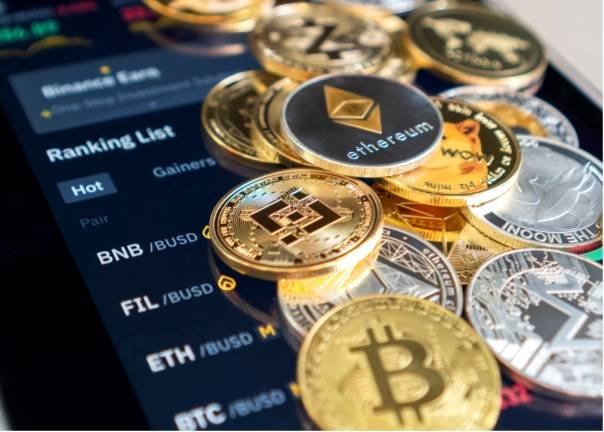
In the ever-evolving world of cryptocurrencies, Bitcoin and altcoins have captured the attention of both investors and risk-takers. While some gravitate towards the tried-and-true Bitcoin, others venture into the realm of altcoins (alternative coins) seeking potentially higher returns.
Interestingly, many crypto enthusiasts – whether they veer towards the traditional Bitcoin or prefer somewhat riskier altcoins – also enjoy a good gamble at an online casino. And the selection of no-deposit Bitcoin casinos is beyond belief. Case in point, new players who register at Bitstarz Casino receive 5BTC on their first four deposits.
There’s no denying that Bitcoin is the world’s largest cryptocurrency, being widely traded the world over. However, there are specific periods when alternative coins, or altcoins, perform better than Bitcoin. These periods, known as altcoin seasons, will be further explored in this article, as we delve deeper into what characterizes them, why they happen, and how to recognize an upcoming altcoin season, among other interesting insights.
What Are Altcoins and How Are They Different From Bitcoin?
Being a portmanteau of “alternative” and “coin”, ‘altcoin’ is an umbrella term that covers all the cryptocurrencies that aren’t Bitcoin. Altcoins have their own special features that set them apart from Bitcoin. While Bitcoin is primarily used for making payments, altcoins have a wider range of uses. Some altcoins like AAVE and UNI act as government tokens, giving holders a say in decision-making processes. Others, such as USDT and USDC, are stable assets tied to the value of the U.S. dollar. Therefore, altcoins serve different purposes and functions compared to Bitcoin.
Altcoin Seasons: What Are They And What Triggers Them?
An altcoin season occurs when altcoins start outperforming BTC, causing Bitcoin’s dominance to decline in the crypto market. This trend tends to catch the attention of experienced traders and investors who have diversified portfolios, as they make adjustments based on altcoin seasons.
In the past, Bitcoin used to control the crypto market, with almost 100% dominance. However, the emergence and growing popularity of altcoins have changed the landscape. As multiple altcoins gain significant market capitalization that surpasses Bitcoin’s market cap, it often indicates the beginning of an altcoin season.
While it’s not easy to pinpoint the exact trigger of an altcoin season, several factors contribute to its occurrence. One common observation is that after a substantial price surge, Bitcoin’s price tends to stabilize. This prompts investors looking for more lucrative opportunities to shift their focus to altcoins, bringing about an altcoin season. This highlights the dynamic and ever-evolving nature of the blockchain industry which constantly drives innovation.
It is precisely the continuous evolution of this industry that prompted a diverse range of altcoins with strong utility cases today. Some altcoins may even gain more attention than Bitcoin due to their unique features or market trends. As traders and investors trade start gravitating towards these particular altcoins, the market capitalization tends to grow, eventually leading to an altcoin season.
How Can I Recognize An Upcoming Altcoin Season?
Predicting an upcoming altcoin season in the volatile world of cryptocurrencies is no easy feat. However, by analyzing historical data, we can identify some indicators that might suggest the possibility of an altcoin season on the horizon.
One such indicator is when Bitcoin is experiencing a bull market. In the past, altcoins have often performed well when Bitcoin’s bull run comes to an end. This is because new investors, seeking more affordable options than Bitcoin, are attracted to altcoins with the potential for significant growth.
Another indicator is when the prices of large market cap altcoins start rising. Apart from Bitcoin, there are other popular cryptocurrencies like BNB and Ether (ETH) that have substantial market capitalizations. When these altcoins experience surges that surpass Bitcoin’s, it sometimes leads to profits flowing into other altcoins too. This trend is similar to when investors move funds from Bitcoin to other potentially profitable altcoin investments.
Blockchain trends have a significant impact on how specific altcoins perform, and it’s pretty remarkable to witness. Case in point is when the DeFi altcoins trend reached its peak in 2020, causing quite a stir in the crypto world. Altcoins specifically associated with DeFi started to experience impressive growth and continue to do so now. DeFi opened up exciting possibilities for decentralized lending, yield farming, and more, attracting a lot of attention and investment. Another trend that had captured the interest of not just crypto enthusiasts but also gamers, fans, and communities beyond the crypto realm is the metaverse. As time goes on, we can expect to see new blockchain trends and milestones emerging. With each new trend, altcoins associated with these developments are likely to generate significant hype and interest. This constant evolution and innovation in the blockchain space keeps things exciting and offers opportunities for both investors and users alike.
Is There An Ideal Time When To Buy Altcoins?
Timing the purchase or sale of altcoins is a tricky game. The crypto market is notorious for its volatility, making it impossible to pinpoint the perfect moment to dive in or cash out during an altcoin season. These seasons can be unpredictable, and their duration is anyone’s guess.
Therefore, it’s crucial to conduct your own research when it comes to altcoins. Take the time to understand the value they bring to the crypto ecosystem and the potential risks associated with them. This fundamental analysis will give you a solid foundation for decision-making.
For traders with a shorter time horizon, there’s also the option to use technical indicators. These tools help monitor the price movements and patterns of altcoins. By keeping an eye on these indicators, traders can gather insights that may assist them in making informed decisions.
Conclusion
In conclusion, Bitcoin undoubtedly possesses stronger investment fundamentals compared to most altcoins. It is the most popular, widely held, and actively traded cryptocurrency in the market. With a massive market capitalization of over $1.2 trillion, Bitcoin commands over 60% of the total crypto market cap.
However, if you’re an investor or trader seeking portfolio diversification, altcoins can offer a compelling alternative to Bitcoin. By conducting thorough research you can get a better grasp of altcoin seasons and make informed decisions before investing in your preferred altcoin.






